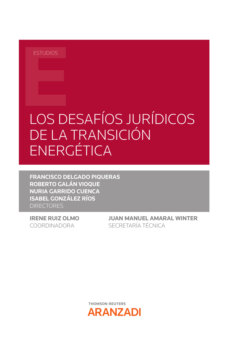Читать книгу Los Desafíos Jurídicos de la Transición Energética - Isabel González Ríos - Страница 64
На сайте Литреса книга снята с продажи.
2. THE NETWORK DEVELOPMENT PLAN
ОглавлениеA second key instrument to expand and develop an existing network which is mainly regulated by EU law is the network development plan. EU Law engages transmission system operator to identify the real need for network expansion.
The basis of the network development plan is the current situation as well as the demand and supply prognoses. The network development plan needs to contain effective measures to maintain the adequacy of the network and to ensure the security of supply31.
The network development plan is designed for ten years but updates must be made at least every two years. The network development plan must be prepared by the transmission system operator in accordance with a specific procedure32. He needs to consider (“fully take into account”) issues involving: the potential for the use of demand response, energy storage facilities or other resources as alternatives to system expansion, as well as expected consumption, trade with other countries and investment plans for Union-wide and regional networks33.
The network development plan shall in particular:
• Indicate to market participants the main transmission infrastructure that needs to be built or upgraded over the next ten years;
• Contain all the investments already decided upon and identify new investments which have to be executed in the next three years;
• Provide a time frame for all investment projects34.
In this context, network expansion is a measure that should only be considered if neither network optimisation, nor pre-expansion improvement is possible (“Optimierung vor Verstärkung vor Ausbau”), meaning that greater interconnectivity of existing grids can therefore be a preferred measure to expansion35.
The planning procedure is open and transparent. The transmission system operator has to consult all the relevant stakeholders36 and then, after elaborating the network development plan, the operator must submit the plan to the regulatory authority for approval.
The regulatory authority needs to – again – consult all current or potential system users of the network development plan in an open and transparent manner to establish if the plan covers all the investment needs.
It further reviews whether the network development plan is consistent with the EU-wide37 ten-year network development plan38. The EU-wide network development plan has to be elaborated by ENTSO for Electricity (European Network of Transmission System Operators for Electricity) but is not binding. If any doubt arises as to the consistency with the EU-wide network development plan, the regulatory authority shall consult ACER, the Agency for the Cooperation of Energy Regulators. The regulatory authority may demand the transmission system operator amend its ten-year network development plan.
The competent national authority – which can be the regulatory authority – will then examine the network development plan to see if it is consistent with the national energy and climate plan submitted in accordance with the relevant governance regulation [regulation (EU) 1999/2001]39.
The regulatory authority’s scope for reviewing the network development plan is limited, particularly because the regulatory authority is not the planning authority. The elaboration of the network development plan is the responsibility of the transmission system operator and the regulatory authority cannot compel the transmission system operator to make investments that the former deems to be appropriate. A compulsion is neither covered by the Internal Market for Electricity Directive [directive (EU) 944/2019] nor compatible with a number of the transmission system operator’s fundamental rights, in particular the right of freedom to conduct a business (Art 16 GRC) and the guarantee of property rights (Art 17 GRC) for the network owner.
Nevertheless, the regulatory agency can oblige the transmission system operator to modify its network development plan. Ultimately, it is the transmission system operator which has to decide whether or not to modify the network development plan, this then essentially constitutes a voluntary commitment which is accordingly compatible with the fundamental rights mentioned above40.
The network development plan is binding for the transmission system operator which must make the planned investments in any network expansion detailed in the network development plan. If the transmission system operator does not execute an investment for any reason which does not arise from a situation beyond its control, the relevant Member State may respond with the following measures:
• It may require the transmission system operator to execute the investments in question;
• It may organise a tender procedure open to any investors for the investment in question; or
• It may oblige the transmission system operator to accept a capital increase to finance the necessary investments and allow independent investors to participate in the capital.
These obligations are compatible with fundamental property rights because the costs of the investments are to be covered by tariff regulations41.
